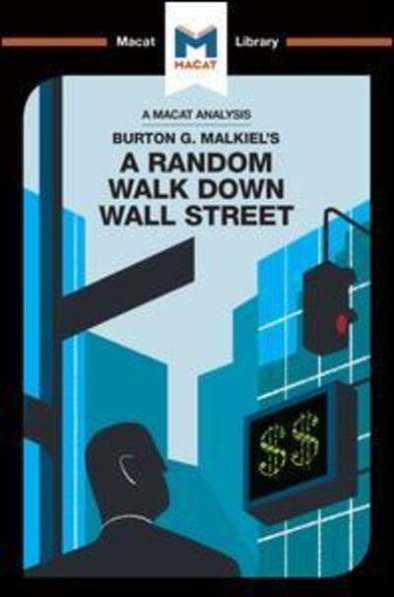Contents

As you may be able to gather from the name alone, day trading is a strategy that requires investors to enter a number of trades in one single day. With day trading, investors rarely will own securities overnight, taking small profits at the end of each day or cutting off losses. Market stop orders are encouraged for most traders, but swing traders have to be careful. They are controversial because of the control they give to market artificial intelligence. Your commissions are now free, which is a better position than having to pay.
When getting started with day trading and swing trading, you need to tick the basics first. Swing trading is also considered less exciting than day trading. As swing trading requires less attention and personal investment, it can often be seen as a less entertaining style of trading. Instead of relying to face-paced trends and immediate price action, swing trading is slower, more methodical, and can be seen by more investors as a safer but more boring approach. Swing trading can be done with just one computer and conventional trading tools. It does not require the state-of-the-art technology of day trading.
To learn how to swing trade stocks like this, the Complete Method Stock Swing Trading Course shows you how. In other words, there’s a “quality” to the “quantity” of time spent in the market. And it’s the qualitative experience of trading that sometimes defines each style better than the definitions themselves. The above material and content should not be considered to be a recommendation to invest in a strategy or any individual digital asset. Are you easily affected by stress, can’t handle looking at screens all day, and prefer to grasp the bigger picture? This lax approach better suits traders with less market exposure.
Swing traders typically spend less time actively trading than day traders. Swing traders typically spend a few hours a day monitoring the markets and researching potential trades, but they may not execute trades every day. They may hold positions for several days or even a few weeks, so they don’t need to constantly monitor the markets or make quick decisions like day traders do. This trading style requires constant monitoring using fundamental analysis, making it best suited for more experienced traders. Since you’re working within short periods of time—minutes or hours—there isn’t any room for error. Simply keeping track of your daily chart isn’t enough; you’ll need dedicated trading software to become a successful day trader.
How much time does swing trading take?
Swing traders often use technical indicators to identify the best trading options, but even the best analytics leave them vulnerable to overnight risk. The ability to stick with the initial swing trading strategy is key to success. Although anyone can start swing trading, it’s best to have at least a general grasp of fundamental analysis before beginning. Since swing trades take place over extended periods of time, traders will need another form of supplemental income to keep the bills paid.
- Our aim is to make our content provide you with a positive ROI from the get-go, without handing over any money for another overpriced course ever again.
- Knowing which market conditions favor one style over the other is key.
- If you are more interested in day trading, check out the EURUSD Day Trading Course.
- With the number of price reversals in the market due to automated systems, you have to book your profits when your targets are hit.
If you work a full-time job and are just looking for a way to prepare for your future, long term investing is a great approach. The collective level of panic and pain from overnight stop orders can result in an automatic sale lower than ideal. However, the longer the day goes on, the market stop orders will become less and less harmful as people have already sold their shares and the low for the day.
Is day trading or swing trading more profitable?
When you open a new, eligible Fidelity account with $50 or more. This may influence which products we review and write about , but it in no way affects our recommendations or advice, which are grounded in thousands of hours of research. Our partners cannot pay us to guarantee favorable reviews of their products or services. Table of Contents Day Trading Game Overtrading Sabotaging the Trade Day Trading Money Management How to Tame the Beast Day Trading Game Day Trading is by far the hardest form of trading.

Results are obtained quickly with all positions usually closed out by the end of the day avoid overnight risk. Since larger sizing is used, the incremental prices moves can be lucrative with a focus on high probability price moves in the smaller amount of time. Of course, day traders can also pursue higher percentage point moves, but these types of intraday moves aren’t as frequent. Day trader closes out all positions before the market hours, whereas swing trading has at least an overnight holding.
Is Swing Trader Less Stressful than Day Trading?
Since the proliferation of online retail brokerage services, stock trading has gained a lot of popularity. Prospective day traders must legitimately ask themselves if they’re set up to effectively day trade, or if their current circumstance is likely to pose problems. Due diligence is required in preparing to make day trades, especially if you require rapid-fire execution to capture quick moves.

With the help of technical analysis, the trader analyzes the chart and spots several strong support levels at HTFs. In this case, zones such as $42k, $35k, and $29k have historically held well and are likely to do so in the future. For the trader, these targets represent price levels suitable for closing the short and swinging back into a long position. After considering all these risk factors, it is easy to understand why day trading is left to professionals. A swing trader averages anywhere from three-to-six trades per week.
The goal is to capture short- to medium-term profits as trends change in a market. Swing traders are exposed to systemic risks since their trades remain open for days or even weeks. During this period, geopolitical developments and high-impact economic news could significantly impact the asset’s price.
Stocks
Due to this extended time frame, swing trading has a higher potential for profit . The spaced-out trading times allow the swing trader to enjoy a full-time job since they don’t need to be constantly monitoring their assets. A swing trader relies heavily on technical analysis to identify moments to enter and exit a position.
Each https://en.forexbrokerslist.site/ has its own unique risks and rewards, and what works for one trader may not work for another. Therefore, It’s important to understand your own preferences, risk tolerance, and to have a solid trading plan. If you dread the thought of sitting in front of your computer all day, staring at flashing symbols, then you swing trading may be a better fit for you than day trading. But when comparing swing trading with day trading, there simply is no “right” answer to that question.
That’s when I https://topforexnews.org/ed focusing on swing trading stocks and developing the Morpheus Trading system. Picking stocks for swing trading will involve a mixture of fundamental analysis and technical analysis. Fundamentally, you want stocks to exhibit certain traits based on the position you are taking. For example, if you take a long position , you will want to see a reasonably priced valuation, strong earnings, and a healthy balance sheet. As for technical analysis, you can identify opportunities by using support and resistance levels and indicators that show volume and momentum. Since swing traders’ time horizons are much longer, they can use their online brokerage accounts to create positions and trade.
This amount of https://forex-trend.net/ will allow you to enter at least a few trades at once. Choosing day trading or swing trading also comes down to the trader’s personality and preference. Swing trading can be an ideal source of passive income for traders, but it is not without its advantages and disadvantages. While your position is open, there is an increased risk of changing conditions that result in your position no longer being successful.
Day trading, on the other hand, involves making multiple trades within a single day and aims to profit from short-term price movements. Both day traders and swing traders rely heavily on technical analysis to analyze and trade their markets. That’s because the effects of market fundamentals (or the underlying “economics” of a given market) can be slow to appear. Swing trading involves unpredictable overnight holding risk of gap up opening or gap down the opening of stock. By understanding the underlying risk, swing trades are usually done on a small position size than day trading. Swing trading is less leveraged compared to day trading; day trading generally involves huge leverage, around 8 to 10 times the investment capital.
It is the trader behind the analysis where the failure appears. This doesn’t translate into swing trading being more profitable forex traders though. There is a lot of discussion around swing trading vs day trading that leaves people in limbo. But if you answered “no” to any of those questions, swing trading is probably not right for you right now.
If the market looks as if it wants to fall, the trader will not hesitate to short. Alternatively, she will not oppose opening a long if the market looks as if it has bottomed out. This is a stark contrast to day trading, where users try to fit their position at lower time frames in hopes that a macro market movement does not obliterate their hypothesis. Keep in mind that high-volatility scenarios are not the only ones worth paying attention to. Certain settings and price actions with low-volatility can also favor day traders, such as LTF ranges. £10,000 is a safe starting point if you want to trade seriously.

